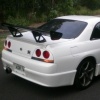R33 Rb30 Conversion
Announcements
-
Similar Content
-
Latest Posts
-
let see how the rest of the fixes go...
-
That's the spirit! (maybe take it out of the car first)
-
I used 227 which isn't super stiff probably should have used 252. but i had an open tube of 227 already. also i'm sure it could be melted out with fire.
-
I forgot to come back to this. If the Sika is not stiff enough, and you can dig it back out (which should not be take for granted as being possible!), then I would try a 2 part polyurethane resin in a durometer a bit stiffer than whatever the Sika measures up at. It would suck having to buy a pot full of it to use just a thumbleful, but whatever.
-
Come on down to Wakie on the 10th instead, I'm taking Neil's R33 out for a shakedown and also hoping to run the V37 too
-





Recommended Posts
Create an account or sign in to comment
You need to be a member in order to leave a comment
Create an account
Sign up for a new account in our community. It's easy!
Register a new accountSign in
Already have an account? Sign in here.
Sign In Now